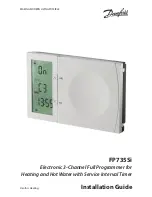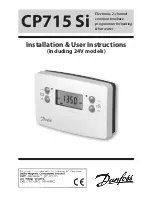
instructions for
acetylene regulator
model no:
Sga4.V2
thank you for purchasing a Sealey product. Manufactured to a high standard, this product will, if used according to these
instructions, and properly maintained, give you years of trouble free performance.
IMPORTANT:
PLEASE READ THESE INSTRUCTIONS CAREFULLY. NOTE THE SAFE OPERATIONAL REQUIREMENTS, WARNINGS & CAUTIONS. USE
THE PRODUCT CORRECTLY AND WITH CARE FOR THE PURPOSE FOR WHICH IT IS INTENDED. FAILURE TO DO SO MAY CAUSE DAMAGE AND/OR
PERSONAL INJURY AND WILL INVALIDATE THE WARRANTY. KEEP THESE INSTRUCTIONS SAFE FOR FUTURE USE.
1. Safety inStructionS
9
A
lways have a fire extinguisher nearby.
8
n
ever use acetylene gas to blow soot or dirt from your clothes.
8
Do not
wear ragged clothes, as sparks can ignite the ragged or loose ends.
9
Secure cylinders to cart, wall or post to prevent them from falling.
9
All cylinders should be used and stored in an upright position.
8
Never drop or strike a cylinder.
Do not
use cylinders that have been dented.
9
Cylinder caps should be used when storing or moving cylinders.
9
Empty cylinders should be kept in specified areas and clearly marked “EMPTY”.
8
Never use oil or grease on any inlet connections, outlet connections or cylinder valves.
9
Examine hoses for cuts, burns or worn areas before each use. Also inspect fittings for damage. If any damage is found, replace
immediately.
9
K
eep all threads and unions clean and free from oil, dirt or grease.
8
n
ever apply oil or grease to any thread.
9
f
or safety advice regarding gas bottles refer to the supplier of the bottles.
9
m
ake sure the bottle key is in place at all times so that in the event of an emergency the cylinder valve can be turned off quickly.
9
Check all joints weekly to make sure there are no leaks. LEAKING HOSES CAN KILL.
9
Remember at all times RED = ACETYLENE “A”
BLUE = OXYGEN “O”
9
A
cetylene fittings have a reverse, left-handed thread.
9
This regulator has no user-serviceable parts. All repairs/calibrations must only be undertaken by a BCGA approved service agent.
9
In case of backfire or flashback immediately turn off all cylinders.
2. introDuction
t
win gauge regulator to BS EN 2503,2009 complete with bull nose adaptor and 3/8” BSP hose union. Displays bottle pressure and working
pressure for Acetylene gas. This type of regulator is intended to control the flow of acetylene gas in an oxyacetylene gas welding & cutting set-
up and should be used for no other purpose and with no other gas. The person using this regulator should be fully trained in all aspects of gas
welding and cutting including setting up, operation and safety procedures.
3. Set up
NOTE: PRESSURE REGULATORS SHOULD BE TREATED AS PRECISION INSTRUMENTS AND SHOULD NOT BE JARRED OR
KNOCKED.
Warning! Danger of eXploSion.
All parts which come into contact with acetylene, including hands and tools, must be free from
oil or grease.
3.1.
function of the regulator.
3.1.1. Fitted to the outlet of the gas cylinder valve, the pressure regulator reduces the pressure of the gas from cylinder pressure to the
constant lower pressure required for the operation of the equipment. Pressure reduction within the regulator occurs in a single stage.
3.2.
preparing the cylinder.
3.2.1. Make sure that the cylinder to be used is safe and properly secured as noted in the safety precautions.
3.2.2. Whilst standing to one side “crack” the cylinder valve. “Cracking” is to quickly open and close the valve allowing gas to escape and
clear the valve of any foreign bodies.
Warning!
If grease or oil is found, cease use of cylinder immediately and contact your gas supplier.
3.3.
attaching the regulator.
3.3.1. Ensure the inlet filter is in place and is not blocked or contaminated.
If an ‘0’ ring is fitted to the inlet, check for damage and replace if necessary with an ‘0’ ring recommended by the regulator
manufacturer. Do not use any form of jointing paste or tape between regulator and cylinder valve. Before attaching the regulator wipe
the fitting with a clean dry cloth. Screw the union at the base of the regulator to the cylinder by hand. Ensure that the gauges are
correctly orientated so as to be seen properly by the operator. The regulator to cylinder fitting has a reverse left handed thread. To
tighten turn anticlockwise. A wrench should be used to ensure tight connections.
s
GA4.V2 | Issue 1(L) 15/04/16
Original Language Version
© Jack Sealey Limited
Refer to
Instructions
Warning
Explosive
Material
Wear
Protective
Clothing
Wear Welding
Mask
Wear
Protective
Gloves
Wear
Safety
Footwear





















